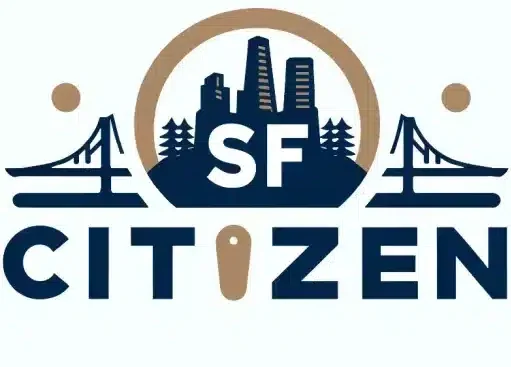San Francisco has warmed by about 2°F (1.1°C) in the last century. Climate change poses serious threats to San Francisco’s infrastructure, economy, health, and ecosystems. Sea level rise, more frequent storms, decreased summer water supply, and complex impacts on the Bay’s marine life are projected.
In This Article
Key Points
- San Francisco has already warmed by 2°F and faces threats from sea level rise, storms, water supply issues, and ecosystem disruption
- The city is taking action to reduce emissions and adapt, with goals to cut greenhouse gases 40% below 1990 levels by 2025
- Challenges remain in transportation, energy use in buildings, and waste, but San Francisco is working to become more sustainable and resilient
San Francisco’s Changing Climate
San Francisco has a mild Mediterranean climate characterized by cool, dry summers and mild, wet winters. However, climate change is altering these patterns:
- Average temperatures are projected to increase 4-6°F by 2100
- Precipitation is becoming more variable, with more frequent droughts and intense storms
- Sea levels could rise up to 66 inches by 2100, threatening low-lying areas
- Coastal fog, a defining feature of San Francisco’s climate, may become less frequent
These changes will impact urban infrastructure, water resources, human health, and natural ecosystems. San Francisco is taking action to both mitigate emissions and adapt to unavoidable impacts.
Reducing Greenhouse Gas Emissions
San Francisco has ambitious goals to reduce its contribution to global warming:
- Cut greenhouse gas emissions to 40% below 1990 levels by 2025
- Achieve 100% renewable electricity by 2030
- Make 80% of trips by sustainable modes like walking, biking, and transit by 2030
Reaching these goals will require major changes:
- Rapidly adopting electric vehicles and reducing car use
- Increasing energy efficiency and renewable energy use in buildings
- Reducing waste and moving towards a circular economy
- Preserving and expanding the urban forest to absorb carbon
The city has made progress, with emissions 30% below 1990 levels as of 2018, but accelerated action is needed.
Adapting to Unavoidable Impacts
Even with emission reductions, some climate change impacts are unavoidable due to past emissions. Key adaptation strategies for San Francisco include:
- Improving coastal flood defenses and building resilience in threatened neighborhoods
- Diversifying and conserving water supplies in preparation for droughts
- Protecting public health from heat waves and worsened air quality
- Restoring wetlands and other ecosystems to buffer climate impacts
- Factoring climate risk into all planning and investment decisions
Adaptation is especially crucial for vulnerable communities that face disproportionate risks from climate change.
Opportunities in the Green Economy
San Francisco’s climate actions also present economic opportunities:
- Growth in green jobs in renewable energy, sustainable transportation, and resilient infrastructure
- Establishing San Francisco and the Bay Area as a hub for clean tech innovation
- Reducing long-term costs by preventing damage from climate impacts
- Improving quality of life through environmental and public health benefits
By leading on climate action, San Francisco can not only protect its own future but demonstrate solutions for cities worldwide.
Challenges and Next Steps
To fully realize its climate goals, San Francisco will need to overcome challenges:
- Financing the major investments needed in transportation, buildings, and infrastructure
- Ensuring an equitable transition that includes and benefits all residents
- Coordinating action across city departments and with regional, state, and business partners
- Building public awareness and support for transformative changes
Continued leadership, innovation, and commitment will be required to secure a livable climate for San Francisco’s future.
FAQ
How much has San Francisco’s climate changed so far?
San Francisco has already warmed by about 2°F (1.1°C) in the last century. Sea levels in the Bay have risen 8 inches. The city is experiencing more frequent heat waves and intense storms.
What are the biggest climate change threats facing San Francisco?
Sea level rise is a major threat, with up to 66 inches possible by 2100. This would flood low-lying areas like the airport, Mission Bay, and the Embarcadero. Droughts, heat waves, and poor air quality also pose public health risks.
What is San Francisco doing to reduce greenhouse gas emissions?
San Francisco has a goal to reduce emissions 40% below 1990 levels by 2025. Key strategies include using 100% renewable electricity by 2030, electrifying transportation and buildings, reducing waste, and expanding green space.
How is San Francisco adapting to unavoidable climate change impacts?
Adaptation strategies include improving coastal flood defenses, diversifying water supplies, protecting vulnerable communities from heat and pollution, restoring wetlands and habitats, and incorporating climate risk into planning decisions.
What challenges does San Francisco face in achieving its climate goals?
Major challenges include financing the billions of dollars in investments needed, ensuring the transition is equitable, coordinating action across different agencies and sectors, and building sustained public and political support for transformative changes. Continued leadership and innovation will be key.

